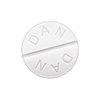Overview of Ventolin
Ventolin, known generically as albuterol, is a medication that predominantly treats obstructive airway diseases. Its primary role is to relax muscles in the airways, thereby increasing airflow to the lungs. Ventolin is brought to you as rescue inhalers, nebulizers, and sometimes as oral tablets or syrups, addressing acute symptoms of conditions such as asthma or chronic obstructive pulmonary disease (COPD).
Indications for Ventolin
Ventolin is indicated for use by individuals suffering from reversible obstructive airway conditions. It is most commonly prescribed to those experiencing asthma, both for routine management of ongoing symptoms and for the emergency treatment of an asthma attack. Additionally, Ventolin can aid individuals with other conditions such as COPD, bronchitis, and emphysema, providing relief from bronchospasms, wheezing, and shortness of breath.
Dosage Instructions
The prescribed dosage of Ventolin differs based on the patient’s age, the severity of their condition, and the medication’s form. Inhaled Ventolin is typically administered via a metered-dose inhaler (MDI) for which the usual dose is 1-2 puffs every 4 to 6 hours as needed. Some conditions may require a more regimented dosing schedule. Always adhere strictly to the dosing schedule and quantity as advised by a healthcare provider.
Administration of Ventolin
For patients using the Ventolin inhaler, an upright position is essential. Shake the inhaler well before each use, exhale fully, place the mouthpiece between the lips and inhale deeply while actuating the inhaler. Hold your breath for a few seconds post-inhalation to allow the medication to settle in the lungs. In the case of nebulized Ventolin, a machine is used to turn the liquid medication into a fine mist inhaled over several minutes. Follow individual manufacturer instructions for proper use.
Contraindications for Ventolin
Ventolin should not be used in individuals with a history of an allergic reaction to albuterol or any of the ingredients in the preparation. In addition, caution should be exercised in patients with certain cardiovascular disorders and in those who are pregnant or breastfeeding, unless deemed necessary by a healthcare provider.
Precautions and Warnings
Understanding potential risks is crucial for Ventolin users. The drug should be used with caution in patients with heart conditions, diabetes, seizure disorders, and hyperthyroidism. Avoid exceeding the recommended dose, as this can lead to adverse cardiovascular effects. Be aware that feelings of anxiety, shakiness, or heart palpitations may occur, signaling the need to consult a doctor.
Drug Interactions
Ventolin can interact with various drugs, leading to heightened or diminished therapeutic effects. Particular caution applies when using other inhaled medications, beta-blockers, diuretics, digoxin, and antidepressants. Always inform your healthcare provider of all current medications to avoid potential interactions.
Possible Side Effects
While most patients tolerate Ventolin well, some may still experience side effects such as headaches, a jittery or nervous feeling, cough, sore throat, or muscle pain. Although rare, more severe reactions like chest pain, rapid heart rate, and allergic responses necessitate immediate medical attention.
Overdose and Emergency Measures
An overdose on Ventolin may lead to symptoms such as tremors, chest pain, rapid heartbeat, or potentially severe hypertension. If suspected, seek immediate emergency assistance. Medical personnel may employ various interventions to stabilize the patient’s condition.
Storage and Handling of Ventolin
Preserve Ventolin’s efficacy by storing it at room temperature away from moisture and heat. Do not expose the inhaler to temperatures above 120 degrees Fahrenheit, and keep it out of reach of children. Verify the expiration date regularly and replace the inhaler when necessary or whenever it has been unused for prolonged periods.
Patient Information Leaflet
Each Ventolin product includes a leaflet that details information pertinent to the patient. This encapsulates everything from utilisation methods, dosing guidelines, potential adverse reactions, and steps to take in the event of an overdose. Patients must acquaint themselves with this material to ensure comprehensive medication understanding and safety.




Reviews
There are no reviews yet.